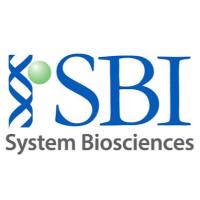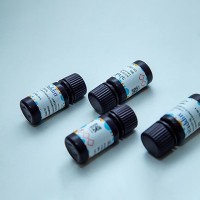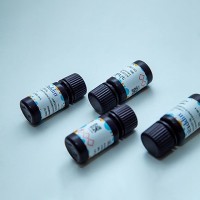Tuq DNA polymerase is a highly stable polymerase isolated from the thermophilic organism
Thermus aquaticus . Because of its unique properties this enzyme has been extensively used for amplification of DNA fragments by the polymerase chain reaction (PCR). In addition, the thermostability of
Tuq DNA Polymerase has proven to be extremely useful for sequencing single-stranded templates by the dideoxy chain termination reaction (
1 –
3 ). The advantage of sequencing with
Tuq DNA polymerase is that the reaction can be extended at high temperature, thus eliminating most band compression encountered when sequencing G + C-rich templates or hairpin regions. This method is particularly useful when sequencing DNA from organisms with a high G + C content where ambiguities are frequently found on the gels (
see Fig.1 ). Currently several companies have developed sequencing kits using
Tuq DNA polymerase. We have tried the TAQence
TM (U.S. Biochemicals, Cleveland, OH) and the
Tuq multiwell
TM (Amersham, Arlington Heights, IL) kits, both of which gave comparably good results. However these kits are relatively expensive and similar results can be obtained by preparing the different solutions with little loss of time. Here we describe a protocol based on the chain termination reaction as described by Stambaugh and Blakesley (
4 ) that involves two major steps.
Fig. 1. Autoradiography of polyacrylamide gel comparing sequence of a G + C rich DNA template with Tuq DNA polymerase using either dGTP (I) or 7-deazadGTP (II) in the reaction mixes. All reactions were performed as described in the text using an M 13mp 19 derived single-stranded templates labeled by incorporation of [(α-35 S] dATP. The reactions were analyzed on a 6% polyacrylamide-urea gel using 0.5X TBE buffer (see (Chapter 38 )). The brackets indicate the area of compression caused by secondary structure formed by the template DNA that are resolved by the 7-deaza-dGTP substitution.








